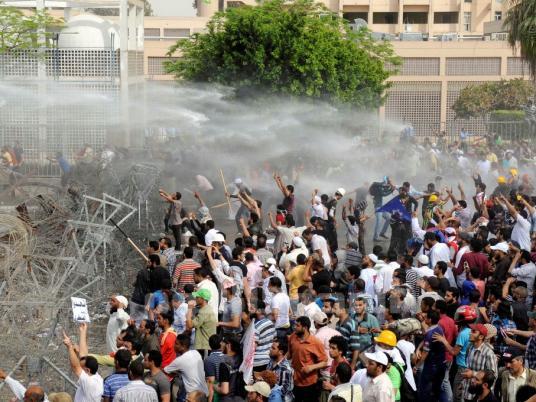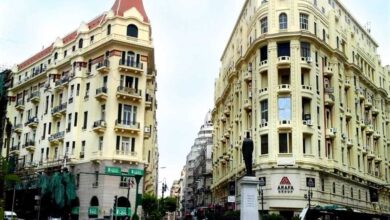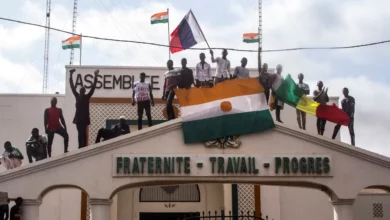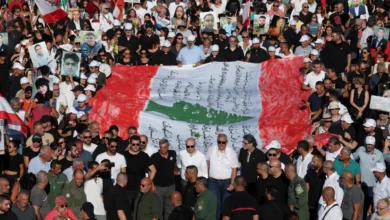
The Supreme Council of Armed Forces announced a curfew Friday evening for the Abbasseya neighborhood following days of clashes in front of the Ministry of Defense there. The curfew will remain in place from 11 pm Friday until 7 am Saturday, Mokhtar al-Mulla, assistant defense minister and SCAF member, said in a statement broadcast on state television.
Emad el-Din Hussain, managing editor of privately-owned Al-Shorouk newspaper, criticized the decision on Nile News channel, saying that this will block vast areas of Cairo.
Mulla said that all the necessary legal procedures will be taken against whoever breaches the decision and also against all those involved in Abbasseya clashes.
Meanwhile, clashes continued in the area Friday evening. Ain Shams Deputy Director Doctor Hisham Adel, told Al-Masry Al-Youm that the hospital had treated over 130 injured in the clashes, from both the security forces and the protesters. Most injuries, he said, were caused by the stones the two sides threw at each other.
An Egypt Independent reporter witnessed clashes near the Abbasseya metro station between young men and military police. Military forces captured several, dragging and beating them at the scene. The sound of weapons firing could be heard. Soldiers and men in plainclothes fought on the same side.
Activist Sherief Gaber also tweeted Friday evening from the bridge above the square that men in plainclothes were firing guns from a mosque.
“The army unit went up and greeted them as friends,” he said, adding that the soldiers "clearly knew the gunmen, they lowered their weapons as soon as they saw them."
Traffic on the 6th of October bridge was nearly stopped, blocked by military and traffic police.
Earlier, security forces pushed protesters out of the Abbasseya area after clashes erupted in front of the Defense Ministry between protesters and security forces. Military police used armored vehicles to chase protesters to Ramses Square. Al-Masry Al-Youm reported that the forces fired birdshots at protesters, resulting in some injuries. Thugs also attacked protesters on Ramses Street with molotov cocktails.
Military forces had used tear gas and water cannons to force protesters out of Abbasseya Square. Gunfire was also heard in the area. The Health Ministry has reported that 59 people have been injured.
Al-Masry Al-Youm reported that makeshift tents belonging to participants in an ongoing sit-in were set on fire by security forces as they cleared the square.
The April 6 Youth Movement announced that it would withdraw from Abbasseya to prevent bloodshed but also stressed its demands. Many protesters are attempting to march back to Tahrir Square.
"I was here since 1 pm. The soldiers were in front of the wire. We were chanting, but it was peaceful. Around 2:30 they snatched three guys and took them. That was when the people started to throw stones," Ezz Saeed, a 34-year-old engineer, told Egypt Independent.
State-run Al-Ahram newspaper reported that the armed forces intensified its presence early in the day outside the Defense Ministry and the surrounding streets, setting up barbed wire and warning protesters to exercise restraint.
Hundreds of protesters had marched from Fatah Mosque in Ramses Square to Abbasseya Square. Al-Azhar students, Salafis, Revolutionary Socialists, the Kefaya Movement and the April 6 Youth Movement took part in the march, Al-Masry Al-Youm said. Protesters carried images of martyrs killed in clashes during the transitional period.
Protesters had approached the barb wire surrounding the Defense Ministry, while the armed forces played patriotic songs over loudspeakers in an attempt to drown out chants against the military council. Extra troops were deployed to secure the ministry.
Protesters chanted against the military council and called for a new revolution. Some carried Ahly football club flags while others carried the flag of Saudi Arabia.
Al-Masry Al-Youm reported that army reserve officer Islam Maarouf said that he and other colleagues decided to join the protests to denounce the military council, which alleges it protected the revolution. He told Al-Masry Al-Youm that the actual protectors of the revolution were soldiers who defied orders to shoot at protesters.
Dozens of Ain Shams University students had joined protesters in Abbasseya Square after Friday prayers, chanting anti-SCAF slogans. A march of hundreds of protesters left Tahrir Square to also join the demonstration in Abbasseya.
The students raised pictures of their colleague, medical student Abul Hassan Ibrahim, who was killed while assisting the wounded during Wednesday’s clashes in Abbasseya Square. They demanded that SCAF be prosecuted “for its involvement in killing participants in the sit-in [in Abbasseya Square].”
Thousands of people had performed Friday prayers in Tahrir. Independent MP Mahmoud al-Khodairy, head of the People’s Assembly Legislative Affairs Committee, and Sheikh Mazhar Shahin, imam of the Omar Makram Mosque, were present among the protesters in Tahrir.
The protesters chanted slogans against Supreme Council of the Armed Forces and its leader, Field Marshal Hussein Tantawi, saying, “Down with military rule,” “Get out, get out,” “Down with the field marshal,” and “The people want to execute the field marshal.”
Political and revolutionary movements had called for protests in Tahrir in response to Wednesday's violence in Abbasseya, which left 11 dead and hundreds injured.
The protest is urging the military to hand over power as scheduled, the cancellation of Article 28 of the Constitutional Declaration and the punishment of those responsible for the deaths in Abbasseya.




